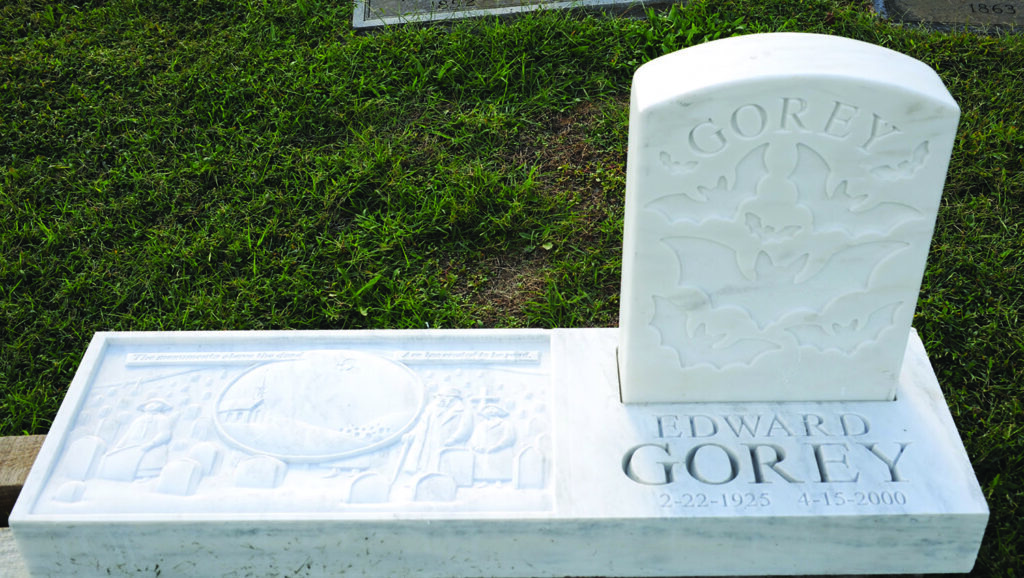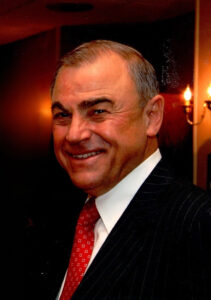
The renowned author and illustrator Edward Gorey has received a fitting tribute with the unveiling of a headstone at Woodland Cemetery in Ironton, Ohio. This marks the first proper marker for Gorey’s grave, which was previously unmarked for over two decades following his death in April 2000 at the age of 75.
Gorey’s ashes were interred at Woodland Cemetery alongside those of his mother, Helen Gorey, who passed away in 1978. Despite his global fame, the exact location of his burial remained largely unknown until the publication of Mark Dery’s biography, “Born to Posthumous,” in 2018. The book revealed that Gorey, who had no direct ties to Ironton, chose to honor his family’s history by burying his mother there, as several generations of her family rest in the same cemetery.
Community Efforts Lead to Memorial Creation
The discovery of Gorey’s grave sparked renewed interest, with fans and admirers visiting the site. One such visitor, Meg O’Malley from Philadelphia, paid her respects during the centenary of Gorey’s birth earlier this year. While at Woodland, she encountered Rich Donohue, a businessman dedicated to cemetery restoration through his nonprofit, Decoration Day 1868.
During their conversation, O’Malley expressed disappointment over the absence of a headstone for Gorey. Inspired by her words, Donohue decided to create a marker, drawing upon his experience of crafting headstones for unmarked veterans’ graves. He dedicated approximately 40 hours to the project, utilizing a CNC machine to carve a marble marker.
The final design consists of a flat stone and an upright headstone. The flat stone features art inspired by Gorey’s 1969 book, “The Iron Tonic,” along with a poignant quote: “The monuments above the dead are too eroded to be read.” The upright stone bears Gorey’s name and dates, adorned with bats, a recurring motif in his work.
A Lasting Legacy in Art and Literature
Donohue’s efforts in creating the headstone have been well received. O’Malley noted the swift realization of their discussion into a tangible tribute, which she later shared with the curator of the Edward Gorey House, Gregory Hischak. Hischak expressed appreciation for the inclusion of the tribute from “The Iron Tonic,” which honors Gorey’s great-grandmother, Helen St. John Garvey, who is also interred at Woodland Cemetery.
In addition to the grave in Ironton, Gorey’s remaining ashes were divided for memorial purposes, with some scattered in Barnstable Harbor on a raft made of southern magnolia leaves—symbolizing a connection to his Cape Cod home. Following the passing of his beloved cats, their ashes were also mixed with Gorey’s and scattered around the property by his friends.
Donohue’s nonprofit, Decoration Day 1868, has accomplished significant work in cleaning and restoring headstones across the region. He is actively involved in the America250 Lawrence County project, which aims to identify and properly mark Revolutionary War burial sites.
For those interested in learning more about Donohue’s endeavors, further information is available on Facebook. To explore the life and legacy of Edward Gorey, visit the official site of the Edward Gorey House.






